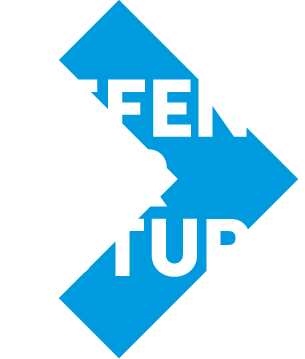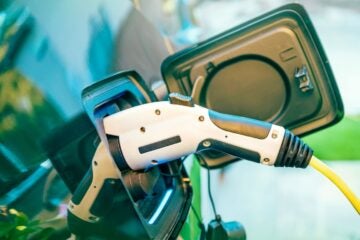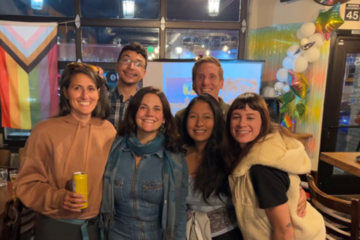
For Women’s History Month, we spoke with Chandler Johnson, a Green 2.0 fellow about her cross-country journey, what sparked her passion for environmental justice, and her work at Green 2.0.
I read about your move cross country and how you became involved with environmental justice. How did you arrive at your current role with Green 2.0?
I became involved with the environmental movement while studying Biology at Howard University. During my second year in school, I selected plant diversity as an elective and that’s where my true passion for the environment blossomed. The biodiversity of plants and their effect on agriculture, climate moderation, and modern medicine ignited a new passion that I hadn’t felt before. I began to shift my focus to environmental science, but throughout my studies, I became startled by the research showing the lack of accessibility marginalized communities have to healthful environments. I felt this was my calling, and I wanted to represent communities like mine that are being disproportionately affected. Over time I interned for various climate change organizations where I had meaningful experiences, however, they lacked diversity. I attended Defend Our Future’s Climate Justice Week with Howard University where our Executive Director at Green 2.0, Andres Jimenez was a panelist. During this panel, I learned of the diversity, inclusion, and equity work that Green 2.0 focused on. I became intrigued and enlightened by the organization’s mission and made the connection.
Many communities across Texas, Oklahoma, and other states are reeling from recent extreme weather. Communities of color have been particularly impacted. Are there any lessons learned that we could apply to help prepare our communities – and our most vulnerable – for future climate-fueled events?
We can prepare our communities of color by accepting that climate change is here and impacting our most vulnerable everywhere. As erratic climate and weather patterns become more common due to climate change, we need to be more strategic on how we prepare our electric grid to adapt to climate-fueled events. In the extreme weather event of last week, the Texas grid got blindsided by the extreme cold as their electrical infrastructure is not adapted to operate in cold environments like the grid of states that experience cold weather more often. While traditionally, Texas hasn’t needed cold-weather equipment and preparation, the recent events show that a pivot is needed to combat the unpredictable future. Many communities of color were faced with electric bills that were upwards of 10x higher than their usual monthly bills due to the supply and demand of electricity in the area. These individuals are in marginalized communities that do not have the means to front the cost of such a high electric bill. To protect vulnerable communities, a protective policy needs to be implemented nationwide to protect from extreme swings in electricity prices due to the market dynamics.
The murders of Breonna Taylor, George Floyd, and so many other Black lives, served not only as a reckoning over racial injustice for Americans but also sparked painful conversation and needed conversation within the environmental movement. Many organizations took stock of past actions and committed to doing better. What do you see as key to ensuring our movement is more diverse and inclusive? And how is Green 2.0 leading these efforts?
I see more tangible and measurable actions from organizations as key to addressing the deep-rooted racial injustice we face in this country. Conversations without actionable efforts will prove to be ineffective in fighting racial injustice, as such diversity and inclusion approaches need to be more deliberate and should include two main aspects. First, to understand the plight of African Americans, Black voices need to be heard. Then, to ensure change, measurable strategies need to be implemented. Green 2.0 is leading these efforts with our Transparency Report Card that presents diversity data from the movement’s most influential non-profit organizations and foundations. Our report cards hold organizations accountable to increase racial and ethnic diversity within the mainstream environmental movement and also spotlight those who are doing well.
The Biden administration has pledged to invest in frontline communities, which have borne the brunt of environmental injustices over many decades. We’ve seen several executive orders to address environmental justice, a commitment to address climate across the federal government, and strong climate champions who are being named to Biden’s cabinet. Although we’re only a month into the new administration, can you share your initial thoughts on his actions?
The Biden administration came into power at one of the most unprecedented times in recent history. Unemployment and the mortality rate due to the pandemic are still very high and dominate the short-term focus of the administration. However, despite this, the Biden administration focuses on re-establishing the United States as a global leader on climate change policy starting with rejoining the Paris Agreement. I think these efforts show that climate change is a very high priority of the administration, as this administration is the first ever to do so, and I expect to see substantial efforts in the months and years to come as the pandemic subsides.
Congress also plays a significant role in achieving our climate goals, including those under the Paris agreement. We’ve seen the electrification of our transportation system and investment in clean energy emerging as top priorities. Notably, we’re also seeing private sector actors like auto companies including GM and Ford making commitments to electric vehicles. How can we ensure that these opportunities are provided to communities that have traditionally been left behind?
I believe competition among automakers will continue to drive the price of electric vehicles down as companies seek to capture more market share. This cost reduction will in turn make the price of an electric vehicle comparative with that of a conventional powered. To ensure these opportunities are provided to communities that have been traditionally left behind, Congress needs to provide targeted incentives to increase tax reductions, provide waived inspections or exemptions of emissions and inspections, and provide rebates on electric vehicle purchases. There also needs to be charging stations in areas that will be accessible to communities that are traditionally left behind.
What advice do you have for fellow young people who are looking to make a difference?
I believe that you can make a difference no matter what your passion, career, or interests may be. I encourage fellow young people to connect their passion with advocacy and to inspire those around you to do the same. Not only is it irresponsible, but it is also unrealistic to believe that we won’t be affected in our lifetime. We cannot leave this work for future generations to mitigate. As Tamara Toles O’Laughlin states succinctly: “This is the climate decade.”
Lastly, how can people learn more about your work?
People can learn more about Green 2.0 and our mission at www.diversegreen.org and follow us on Twitter at @DiverseGreen. You can learn more about my environmental justice advocacy by following my blog on Instagram at @noir.green and Twitter at @TheNoirGreen.




